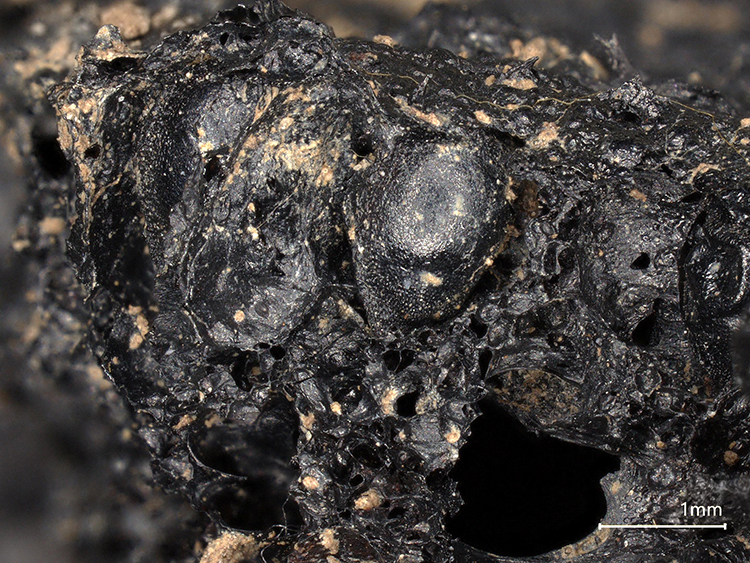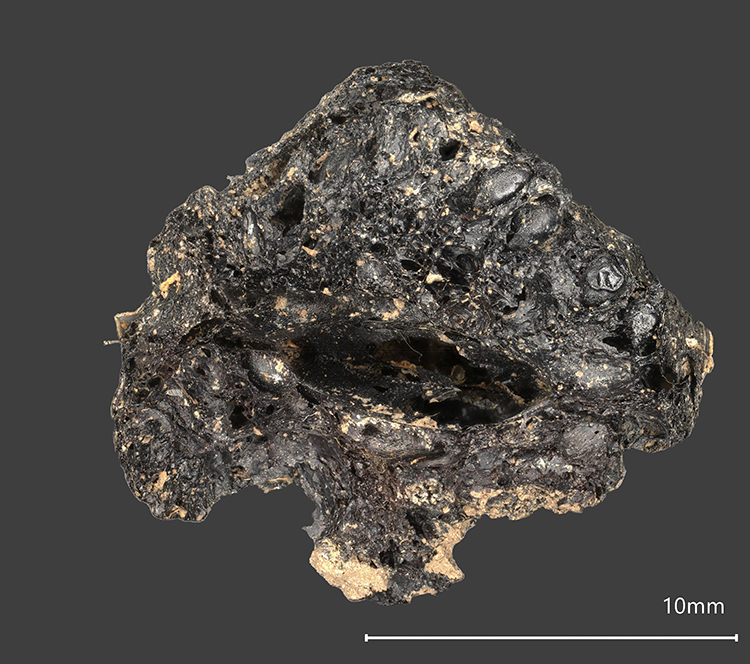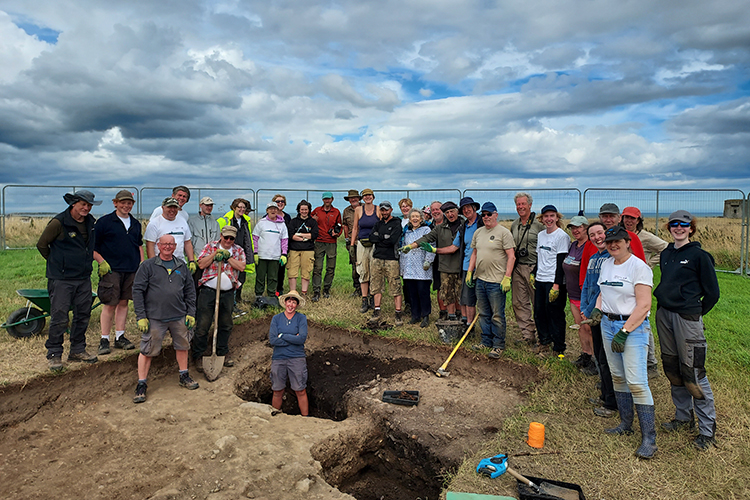Discovery of a 2000-year-old fig reveals Ireland’s ancient international food trade
Posted 14 November, 2024

Detail of seeds embedded within the charred fig from Drumanagh. This photograph was taken at a Historic England laboratory using an AHRC-funded Keyence VHX7000 3-D digital microscope at x 30 magnification Credit: Historic England
The discovery of a 2000-year-old fig in North Dublin highlights Ireland’s long history of international food trade and a taste for exotic foods.
The fig was unearthed from an archaeological excavation at a headland in Drumanagh, where an important trading post with the Roman Empire was located.
A wide variety of goods arrived here, and the discovery of a large, charred fragment of a fig fruit reveals tantalising evidence of an exotic food traded between the Roman Empire and Ireland.
“Fig seeds dating to as far back as the 13th century have been recovered from excavations of medieval Dublin, Cork and other towns,” said (opens in a new window)Associate Professor Meriel McClatchie, Director of the UCD Ancient Foods research group at UCD School of Archaeology.
“An actual fruit has never been found in Ireland until now, but what is most important about the Drumanagh fig is its antiquity. It is without parallel in Ireland and is by far the oldest example of an exotic fruit found here.”

The charred fig from the Drumanagh excavation. This image was taken at a Historic England laboratory using an AHRC-funded Keyence VHX7000 3-D digital microscope at x 30 magnification Credit: Historic England
At its height, the Roman Empire ruled much of Europe, and parts of Western Asia and North Africa. Its power did not extend into Ireland, however.
The establishment of extensive trading routes within the Empire allowed Roman cuisine to become widely available, including new herbs and spices, nuts such as almonds, and fruits such as grapes, dates and figs.
According to Associate Professor McClatchie while figs were traded across the Empire “we did not know until now that they made it all the way to Ireland”.
“Finds of fig elsewhere in northern Europe are thought to reflect imports from southern Europe, and it is likely that this new Irish discovery travelled a similar distance. It’s thrilling to imagine someone enjoying such an exotic food here in Ireland so long ago.”
The excavations at Drumanagh are led by Christine Baker, the Heritage Officer/Archaeologist at Fingal County Council. Her team have uncovered extensive evidence for craft and domestic activities, including metal and ceramic objects that originated in Roman Spain, Gaul and Britain, as well as objects that reflect locally based activities.

A team of professional archaeologists and volunteers taking part in the fourth season of the community excavation at Drumanagh Credit: Christine Baker, Heritage Officer/Archaeologist at Fingal County Council
The site has also yielded the remains of foods eaten there almost 2000 years ago. This material survived because it was burnt, which enabled its preservation.
Analysis by Associate Professor McClatchie at UCD has also revealed the presence of significant quantities of spelt wheat, a cereal that was rare in Ireland's past but was a staple of Roman Britain.
“Our excavations have revealed more of the story of those living and working at Drumanagh,” said Christine Baker. “We now know there was an importation, not just of goods but of lifestyle. By these windswept cliffs people were consuming spelt bread, olive oil and figs, drinking from glass vessels and fine ceramic cups while wearing brooches and glass beads. The evidence so far points to a connection with Chester/Wirral area of Roman Britain during the first 200 years of the Roman conquest.”
(opens in a new window)Drumanagh Day 2024, a seminar where the results of the post-excavation analysis to date will be shared with participants and the public will take place on Saturday 16th November 2024.
The Drumanagh promontory fort is a nationally important Iron Age archaeological site and is of international significance in terms of Ireland’s relationship with the Roman world. The site consists of a headland of c.46 acres defended by a series of earthworks.
Fingal County Council took ownership of the site at the end of 2016. Building on the Drumanagh Conservation Study and Management Plan 2018– 2023, the (opens in a new window)Digging Drumanagh project was developed.
By: David Kearns, Digital Journalist / Media Officer, UCD University Relations
To contact the UCD News & Content Team, email: newsdesk@ucd.ie






